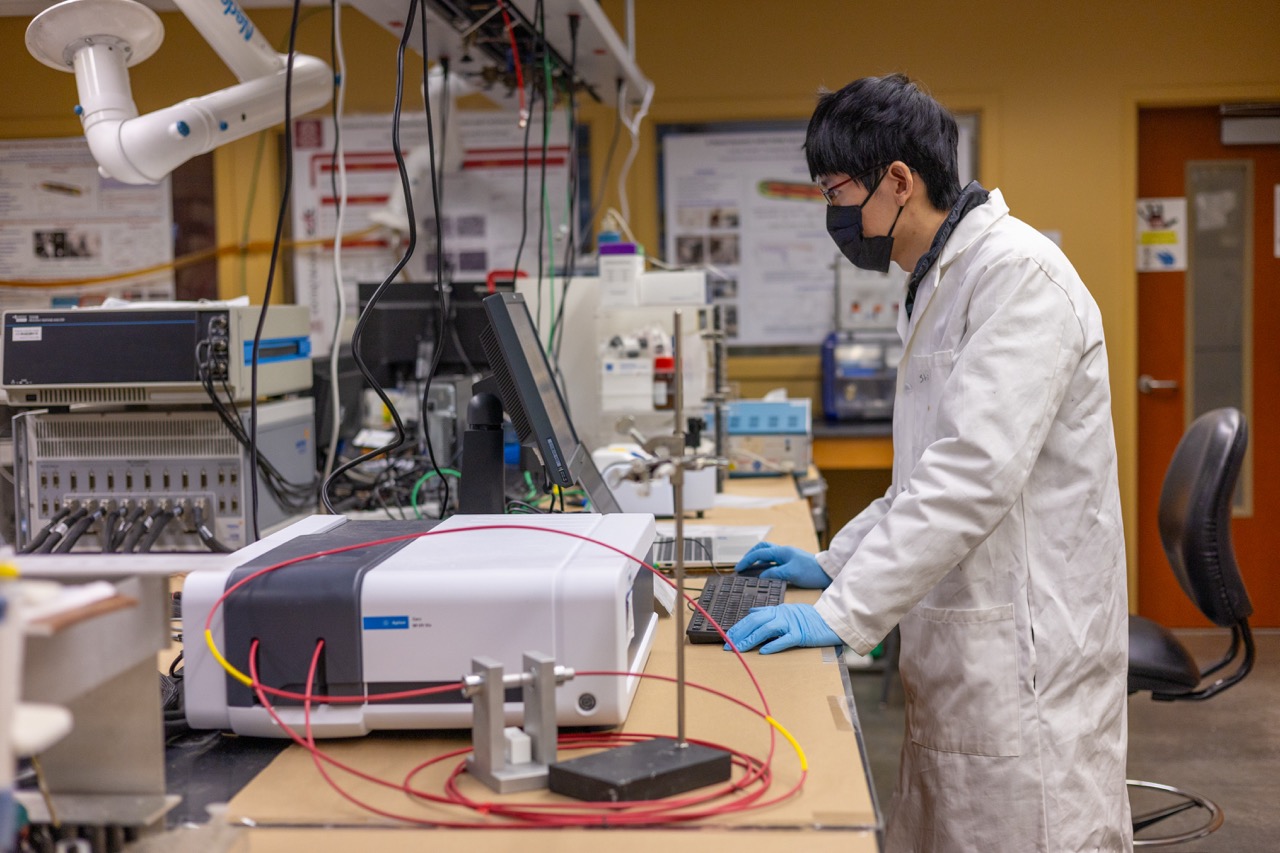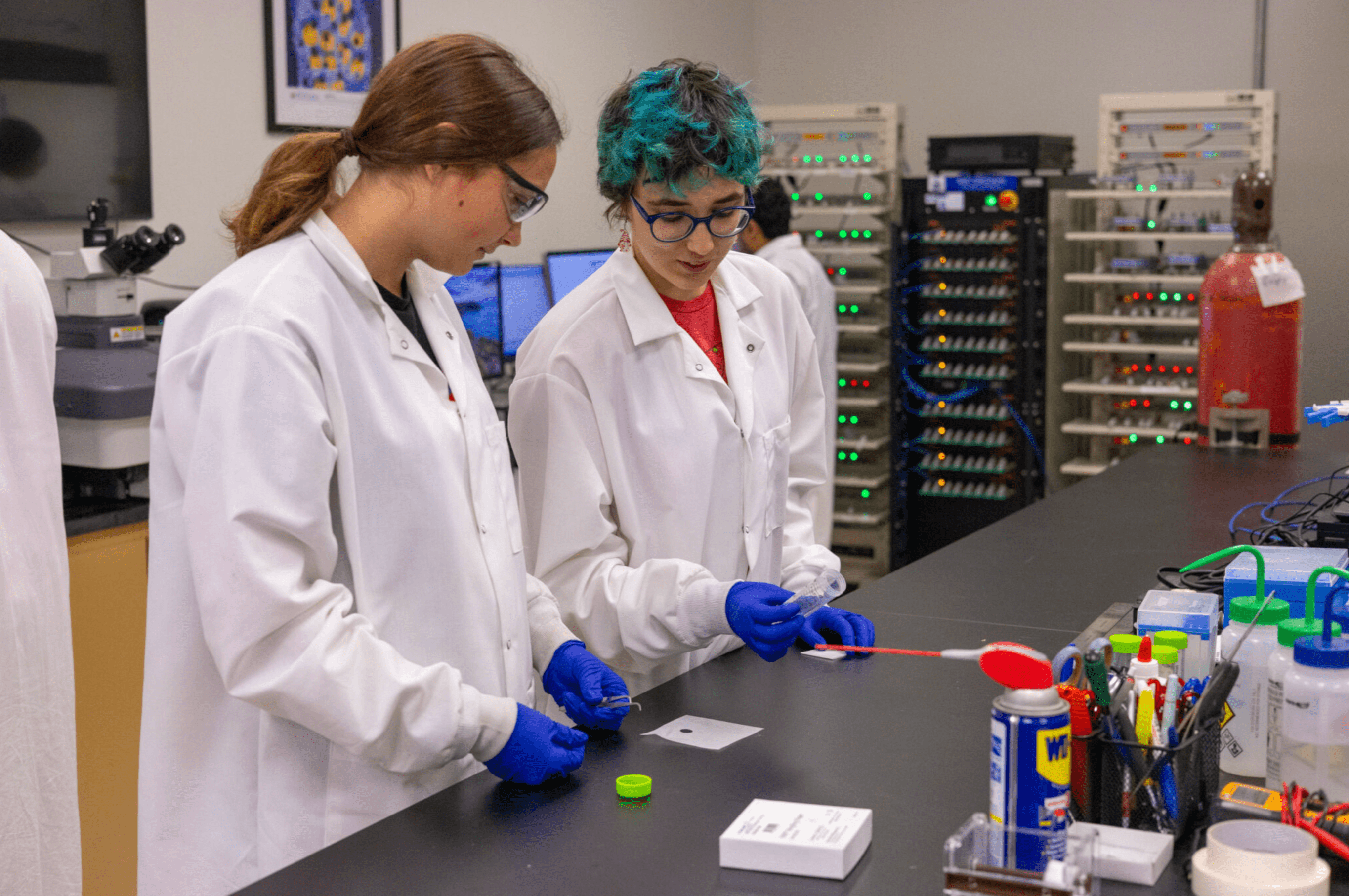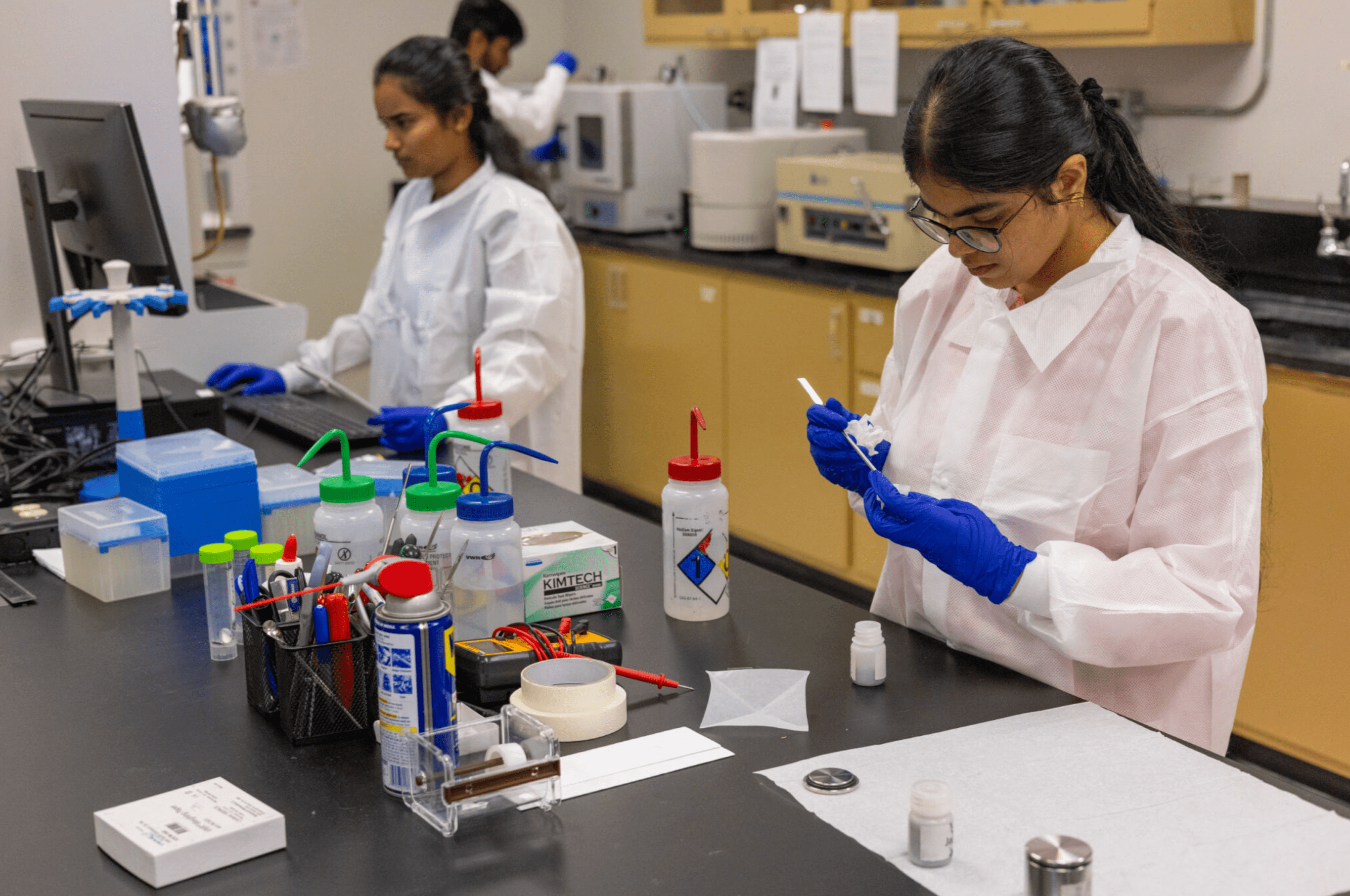Leading the Charge: Battery Science and Engineering at the University of South Carolina
USC has grown from early silver–zinc battery studies in the 1980s to a leading center for advanced chemistries, modeling, safety, and grid integration. With the new Carolina Institute for Battery Innovation (CIBI) and pilot manufacturing facilities coming in 2026, USC is positioning itself as a national hub for battery research and industry partnerships.

Early Investments in Batteries and Electrochemical Engineering
Battery research at the University of South Carolina began in 1984 with significant work on silver–zinc systems. In the 1990’s that work was expanded to include nickel–hydrogen batteries and Li-based battery technology. The program gained significant momentum in 1993 when Dr. Ralph E. White joined USC, bringing advanced battery modeling expertise and securing major funding focused on materials and corrosion engineering. Through the 1990s and 2000s, USC became a leader in battery simulation, battery aging models, advanced lithium-ion battery materials and battery separators development.
In the 2010’s the leadership transitioned; Dr. White became Dean, other faculty retired, and others took leadership positions at other universities, meaning that there was an opportunity to keep USC’s battery research strong through investment across the College of Engineering and Computing and the College of Arts and Sciences. USC hired several faculty in Chemical, Mechanical and Electrical Engineering as well as the Department of Chemistry and Biochemistry, building in the more mechanical and practical aspects of battery behavior and implementation. The 2020’s have seen that legacy continue with additional hiring and large new initiatives that promise to take batteries at USC to even greater heights.
Growth and the Carolina Institute for Battery Innovation (CIBI)
Building from the work in the 1990’s, USC has continually invested in battery technology and electrochemical engineering. This has led to a very large team of battery researchers, with 18 faculty and dozens of graduate students, undergraduate students, postdocs and staff scientists – totaling nearly 100 individuals. Their work spans materials, chemistry, simulations, safety, recycling, systems integration and controls – collaboratively tackling project with both industry and government partners.
Recognizing the wide array of expertise and the need to support the fast-growing battery industry within SC and across the U.S., in 2024, USC announced the formation of the Carolina Institute for Battery Innovation (CIBI). CIBI is a one stop shop for partners to engage in battery research, education and manufacturing. These activities will be supported by the construction of a new facility, where the first phase is slated to be operational in 2026 and include two pilot manufacturing lines (pouch and cylindrical formats). These pilot lines, along with the faculty expertise, will allow USC to train and innovate at the nanoscale, grid-scale, and everything in between. USC will create the next-generation workforce for battery technology by supporting and enabling technological and economic development

Focus on USC’s Broad Research Portfolio
With nearly 100 researchers working on battery science and engineering across several different chemistries and applications, it would be very difficult to create a comprehensive description of all of the activities going on at USC. Below are brief, non-comprehensive descriptions and highlights of the types of work that are done, with the hope that the reader gets a good sense for what is going on across campus, and that possible partners see something that piques their interest and motivates them to get involved in USC/CIBI activities.
Modeling and Simulation
USC offers robust simulation capabilities of electrochemical systems. Over the years, USC researchers have applied multi-scale and multi-dimensional modeling techniques to explore transport phenomena and improve the performance and safety of batteries, fuel cells, corrosion, electrodeposition, etc. Specialized efforts focus on physics-based modeling of lithium-ion batteries, emphasizing thermal behavior and safety, including the study of thermal runaway of single cells of different types and heat propagation in battery packs. Complementing traditional physics-based modeling, efforts are underway to leverage expertise in machine learning and artificial intelligence. This has allowed USC researchers to focus on many types of problems, such as understanding the effect of binder properties on expansion, investigating heat propagation during cell thermal runaway in packs designed for space applications, deconvoluting lithium ionic conductivity in across phases as well as the surface vs. bulk, developing battery management systems with predictive capabilities, and integrating cells, packs and modules into power grids.
USC also models lithium-ion batteries to understand and predict their present state-of-charge (SOC), state-of-health (SOH), and state-of-power (SOP), which is particularly important for practical battery deployment in electric vehicles (EVs) battery energy storage systems (BESS) and other applications. Battery equivalent circuit models and enhanced single particle models are used to capture both dynamic response and long-term degradation mechanisms. They also serve as digital twins in some applications to guide and track the states of physical battery systems. These models are critical to ensure safe and efficient operation. For battery state estimation and prediction, some advanced approaches using extended Kalman filters and particle filters have been adopted. With the advance of machine learning, data-driven methods have also been developed and combined with many existing methods to further enhance the performance of state estimation and prediction. These insights have been embedded within battery management system enabling informed control of charging, discharging and grid support functions.
Advanced Chemistries
At the University of South Carolina, faculty are also advancing the fundamental understanding and realization of next-generation battery chemistries. Research spans aqueous zinc and sodium-based systems, exploring how electrode and electrolyte interactions govern stability, ion transport, and electrochemical behavior. Solid-state systems are also being investigated, with studies focused on interfacial phenomena, ion conduction, and mechanisms that determine long-term stability. Central to these efforts is the design and engineering of materials and interfaces. Polymer electrolytes and cellulose-based separators are tailored at the molecular and structural levels to optimize ionic conductivity, mechanical robustness, and chemical stability, while liquid organic electrolytes for lithium-ion batteries are being studied to enhance interphase formation and cycling stability.
High-performance electrode materials are being studied for lithium-ion batteries and beyond, including nickel-manganese-cobalt, lithium-iron-phosphate, and sulfur at the cathode as well as lithium metal, zinc, metal oxide, and silicon at the anode. Researchers probe the relationship between structure, composition, and electrochemical behavior to understand how material properties control electrochemical performance. Teams are also developing methods to recover and recycle valuable materials from spent batteries and to understand how electrode and electrolyte chemistry affect batteries in second life applications.
Advanced Characterization
Advancing battery materials requires advanced characterizations to understand relationships about how the manufacturing process dictates the atomic and nanoscale structures that result in measurable properties and performance. USC is a flagship campus that has a full suite of characterization instruments. Their Electron Microscopy Center has a suite of microscopes that include a scanning transmission electron microscope (STEM) for researchers to take direct images of how atoms are organized in novel materials as well as several scanning electron microscopes for nanometer and micrometer scale analysis of shape and composition. USC has a Mass Spectrometry Center with a comprehensive suite of instruments for ultrasensitive detection of accurate mass, assessment of purity levels, and trace element detection. The South Carolina SAXS collaborative (SCSC) facility enables operando X-ray diffraction measurements where the changes in atomic structure may be detected live while cycling batteries to detect phase changes and distortions. The SCSC can also measure extreme small-angle X-ray scattering to measure the specific surface area of materials which is important when enhancing battery rate capability or when measuring diffusion coefficients. The X-ray photoelectron spectroscopy (XPS) instruments enable surface composition and oxidation state analysis. Collectively, this ensemble of instruments – and others not mentioned here for other chemical, physical and thermal analyses – enables state-of-the-art batteries to be researched and developed.
Grid and Systems
USC faculty also work on battery integration into energy systems at large scale, including military vessels (e.g., ships) and the grid. These activities focus both on physical assets as well as simulations and digital twins. These converters can be used for distributed generation, energy storage, electronic loads, data centers, and distribution systems and allow battery assets to be used to enhance resiliency, efficiency, and flexibility. The university recently connected a USC-designed, pad-mounted medium voltage transformer (allowing variable AC voltage from 0-13.8kV) for a megawatt semi-truck charging system and soon will develop and test megawatt-scale inverters for sodium-ion battery energy storage systems. These physical components can be the basis of digitally twinned systems which can improve energy management, utilization, and resiliency.
On the software side, USC faculty are simulating grid-level controls for improved battery utilization via digital twins for grid energy and resource management. More specifically, every technology has ramp-rate limitations, which can be stressed by transient and pulsed loading. Without these cyber technologies, these loads can cause batteries in hybrid systems to underperform relative to expectations. Work at USC focuses on balancing energy delivery in complex systems to respond to various load types by relying on traditional assets and electrochemical assets (batteries and supercapacitors) when most appropriate.

Testing and Safety
Li-ion battery safety has become a major hurdle for their wider adoption as reliable power sources and energy storage systems. USC researchers have been actively involved in fundamental and applied research to help improve safety and sustainability of batteries for several years. One core area of expertise includes understanding fundamental mechanisms of lithium-ion battery thermal runaway, and cell-to-cell thermal runaway propagation. They have developed new experimental techniques and test protocols for quantifying the safety threshold of large format pouch cells under mechanical impact, and helped EV OEMs to obtain the safety design envelope for lithium ion battery packs under various vehicle impact scenarios. They have also worked on understanding the composition of exhaust gas from batteries during thermal runaway events, and even used their expertise in that area to work with first responders in the City of Columbia SC to better prepare for responding to battery fires.
USC has also developed electro-thermal digital twins for batteries and other energy storage devices in integrated power electronic systems. In particular, the electro-thermal modeling of high rate discharge (> 20C) of lithium-ion batteries. This work allows for effective battery management, adaptive control and decision-making in dynamic environments. They house an accelerated impact testing machine capable of generating 5,000 g of deacceleration that is being used for the testing of lithium-ion batteries under repeated impact loading. They also have the capability to investigate battery behavior under multi-axis shock and vibration, and have the ability to perform a full suite of electrochemical characterization during testing, allowing for degradation forecasting to predict useful life.
Future/Outlook
The next several months and years are very exciting for USC and the CIBI. New faculty continue to be hired, new students and scientists added to the team, and new industry partners engaged. Construction on the first phase of CIBI is starting in early 2026, with completion and opening of the dry room pilot facility by the end of the year. Phase 2 is a planned full 100,000 square foot facility that will have industry spaces, classrooms, computational facilities, wet labs, dry labs, characterization facilities, additional dry rooms, etc. Batteries at USC have been a core strength for decades and we only plan to grow the team moving forward. This will support battery research, education and manufacturing needs for companies in SC, across the Southeast, and across the United States. Batteries are a vital part of the U.S. energy future and will be an important economic driver for the state of South Carolina.
For more information about CIBI, please visit https://research.cec.sc.edu/cibi or contact us at cibi@sc.edu.
Authors: Ralph White, Golareh Jalilvand, Bin Zhang, Morgan Stefik, Paul Coman, Xinyu Huang, Kristen Booth and William Mustain



.jpg)
.jpg)